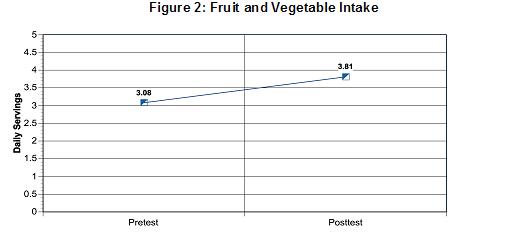Program Highlights
Program Materials
Preview materials
Program Scores
The Need
The Program
Time Required
Intended Audience
Suitable Settings
Required Resources
About the Study
WIN was evaluated at a corporate worksite employing 230 individuals in a single-group, pretest/posttest research design. Employees received an initial e-mail from the participating company indicating the company authorized the program and that participation was voluntary. Approximately one third of the employees (i.e., 84) chose to receive e-mails and filled out a pre-intervention questionnaire; 47 of those participants filled out the post-intervention questionnaire. The outcomes were self-reported increases in fruit and vegetable intake, decreases in fatty food intake, and progress on a measure of Stage of Change for healthy eating.
Key Findings
- Self-reported intake of dietary fat was assessed by asking respondents to rate their intake on 15 items related to dietary fats (meats, dairy, spread, etc.). Participants who responded to the posttest questionnaire reported their consumption of dietary fat decreased an average of 0.39 servings per day, compared to baseline (p<.001).

- Self-reported intake of fruits and vegetables was assessed by asking respondents to describe their intake on seven items describing fruits and vegetables. The response options were 0= less than once per week, 1= about once per week, 2= 2-3 times per week, 3= 4-6 times per week, 4= every day, and 5= 2 or more times per day. Participants who responded to the posttest questionnaire reported their consumption of fruits and vegetables increased an average of 0.73 servings per day, compared to baseline (p<.01).

- Stage of Readiness for Change was categorized in three stages: pre-contemplation, contemplation/preparation, and action/maintenance. Of those who were not in the action/maintenance category at baseline (and therefore had room for forward movement), 65% had forward movement in Stage of Change for dietary fat intake (p= .04), and 74% had forward movement in Stage of Change for fruit and vegetable intake (p= .03).


